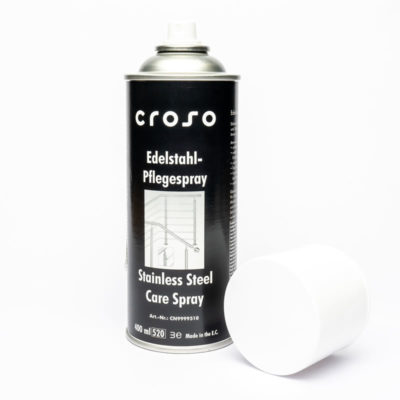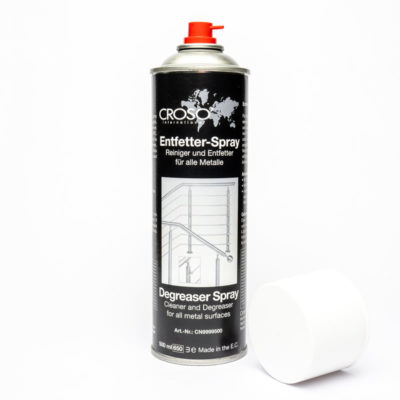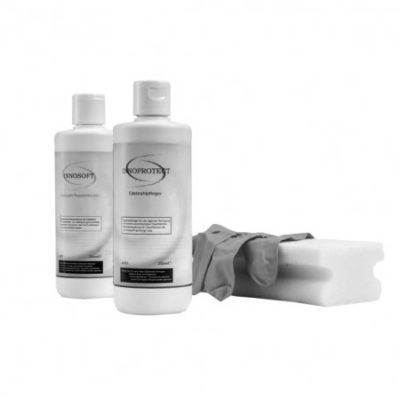Stainless steel is naturally corrosion-proof and needs no additional protective coating to maintain its gloss and usability. Saying that however, a certain amount of routine maintenance involving cleaning and washing may be required. Our mantra “stainless” not “stainfree” holds very true. In this respect, stainless steel is no different to other building materials such as glass, plastic or coloured steel, which also require maintenance during the installations life.
The following guidelines are general and given as advice for best practice when dealing with the corrosion properties of stainless steel.
Maintaining and Cleaning Stainless Steel
The frequency with which indoor stainless steel surfaces should be cleaned is actually no different than other materials. The surfaces should be washed before accumulated dirt or fingermarks become obvious which will also make the cleaning as easy as possible and minimize the risk of leaving marks behind or affecting the surface finish.
If stainless steel is used outdoors, it is automatically exposed to a more aggressive environment.
Eg.
- A maritime/coastal environment
- An industrial atmosphere
- Road salts (winter)
- Air pollution
All of these environments can cause brown spots to appear. A general rule would be to clean the stainless steel surfaces as often as the buildings windows. Depending upon the degree of contamination form the surroundings, an interval of six to twelve months is recommended for light contamination and three to six months for more severe conditions. Cleaning agents containing phosphoric acid can be used for removing this type of staining.
Cleaning Agent
A damp cloth is usually sufficient for wiping away light dirt, fingermarks and the like. For tougher spots, a cleaning pad, such as “Scotch Brite” is often required. Do not use mesh balls of metal wire (Not stainless steel), steel wool or metal brushes to clean stainless steel. Not only will these scratch the stainless steel surface but they will also leave behind carbon particles which will after time leave further staining when the surface gets wet.
It is better to use a soft nylon brush for cleaning patterned stainless steel. Do not use steel brushes made of any material besides stainless steel.
For stainless steel with a polished finish with visible polishing grains, clean the steel with the grain – not against the grain. When water has been used for cleaning and rinsing, wipe the surface dry to prevent water from drying and forming watermarks, especially in areas with hard water. Avoid this type of watermark by using distilled water.
To avoid transferring contamination in the form of iron particles, make sure the cleaning material was not used for cleaning mild (carbon) steel previously. It is best to use cleaning materials designed specifically for use with stainless steel.
To remove fingermarks and similar spots on indoor stainless steel surfaces, soapy water or a mild dishwashing detergent will usually give reliable and rewarding results.
Spray cleaners available on the market make cleaning easy and also leave a thin film for polished effect. Such spray cleaners remove fingermarks and reduce the tendency for new marks to keep forming. Buff with a soft dry cloth.
Discoloration must be removed mechanically using a nylon sponge such as “Scotch Brite” which are used in kitchens. Alternatively, it is possible to use retail cleaners containing phosphoric acid that are intended for use on stainless steel.
Stainless steel with a mirror finish can be cleaned using all purpose window cleaners. They should not contain chlorides (common salt).
For tougher spots, cream polish like Vim can be effective as well as baby oil. These can also be used for wiping off water spots and can alleviate discoloration. Remove this type of residue by rinsing with clean water (preferably distilled water) and wipe away any remaining streaks of polish or watermarks. Do not use scouring powder as it will scratch the stainless steel surface.
Tough grease or oil marks can be removed using denatured alcohol or acetone. There is no risk of corroding the stainless steel by using such solvents. Be careful to limit the amount of solvent used, to avoid spreading the spots over a large area, which makes cleaning more difficult. For this reason it may be more beneficial to wash more than once using a pure solvent on a clean soft cloth until all of the grease residue has been eliminated.
Paint and graffiti can be removed by using ordinary soda solutions, or paint removers. Do not use paint scrapers or knives to remove dirt spots as they will scratch the stainless surface.
Badly neglected surfaces can be cleaned with a metal polisher used for cleaning chromium plated surfaces. Also the type of polishing agents used for polishing car enamel can be considered. Be careful however, because mirror finish surfaces can be scratched by this type of polish.
Do not use the following cleaning agents to clean stainless steel.
- Cleaners containing Chloride
- Bleaches containing hypochlorite
- Silver Polish
Regular Cleaning
For outdoor installations, rain will usually wash off accumulated dirt and other coatings, if the surfaces are freely exposed. Be particularly aware of surfaces protected by a roof when performing routine cleaning to flush off areas that may not be accessible as others. This is especially important in maritime and industrial environments.
In real terms we advise to clean you balustrade as regularly as you clean your windows.
If you require any assistance regarding any of the points raised, please feel free to give us a call.
Alternatively, you can purchase an Innosoft Cleaning kit from our online shop.




